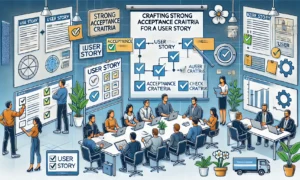Managing a product backlog is one of the most critical tasks for a Product Manager. The backlog is essentially a collection of all the tasks, features, and improvements needed for the product. However, it’s not just about adding items to the list—it’s about managing and prioritizing these tasks to ensure the team works on the most important and impactful items at any given time.
Here’s a look at effective strategies for prioritizing your product backlog and ensuring smooth product development.
1. Understand the Product Vision and Goals
Before diving into prioritization techniques, ensure you clearly understand your product vision and goals. Each backlog item should align with your broader business objectives. This helps to avoid building features that might not provide significant value in the long term.
Example: If your goal is to enhance user engagement, prioritizing features like personalized recommendations might take precedence over technical improvements.
2. Use the MoSCoW Method
The MoSCoW method is a simple but effective framework for backlog prioritization:
- Must-have: Features critical for the product’s success.
- Should-have: Features that add value but are not essential.
- Could-have: Features that would be nice to have but are not a priority.
- Won’t-have: Features that will not be implemented in the current cycle.
Example: If your team is working on a new e-commerce website, “must-have” features might include a secure checkout process, while “should-have” features could be advanced filtering options.
3. Apply the Value vs. Effort Matrix
This method helps you assess the potential value of each task relative to the effort it will require. The idea is to prioritize items that provide the most value for the least amount of effort.
The matrix is divided into four quadrants:
- Quick Wins: High value, low effort.
- Major Projects: High value, high effort.
- Fill-ins: Low value, low effort.
- Time Sinks: Low value, high effort.
Example: If you’re building an app and a feature like “dark mode” offers high value but requires minimal effort to implement, it should be prioritized over complex features that don’t add as much immediate value.
4. Use the Kano Model
The Kano Model helps you assess features based on their impact on user satisfaction:
- Basic Needs: Features that users expect and are disappointed if not present.
- Performance Needs: Features that improve user satisfaction when performed well.
- Excitement Needs: Features that delight users but are not expected.
Example: In a fitness app, features like “step tracking” might be considered basic needs, while a “community leaderboard” could be an excitement feature that delights users but isn’t essential.
5. Conduct Regular Backlog Grooming Sessions
Backlog grooming is the process of reviewing and refining your backlog to ensure it remains relevant and aligned with the product strategy. These sessions should involve not only the product team but also stakeholders, developers, and designers to provide input on the feasibility and value of tasks.
6. Leverage Data and User Feedback
Real-time data and feedback from users are critical when deciding which features to prioritize. Analytics tools can provide insights into user behavior, while customer support tickets, surveys, and social media can reveal common pain points or feature requests.
Example: If data shows that users frequently abandon their cart due to poor checkout experience, prioritizing improvements to that feature should be considered.
7. Set Clear Deadlines and Release Plans
As product development progresses, there will be deadlines and release plans to consider. Be mindful of external deadlines, like marketing launches or compliance dates, which may necessitate the prioritization of certain tasks over others.
Example: If a marketing campaign for a new feature is planned for next month, prioritize the features required for that launch to meet the deadline.
8. Engage with Stakeholders Regularly
It’s important to communicate with stakeholders regularly to ensure the product backlog aligns with their expectations. This helps prevent conflicts between the needs of various departments and ensures the product is being built with the right objectives in mind.
Conclusion
Effective backlog management is not just about managing tasks—it’s about aligning development with business objectives and ensuring that the product delivers value to users. By using prioritization strategies like MoSCoW, Value vs. Effort, and the Kano Model, Product Managers can ensure that the most important tasks are addressed first, keeping teams focused and improving the chances of delivering a successful product.
Disclaimer
Posts in the Notebook are written by individual members and reflect personal insights or opinions. Please verify any information independently. If you have any concerns, notify the admin immediately so we can take action before any legal steps are taken.





